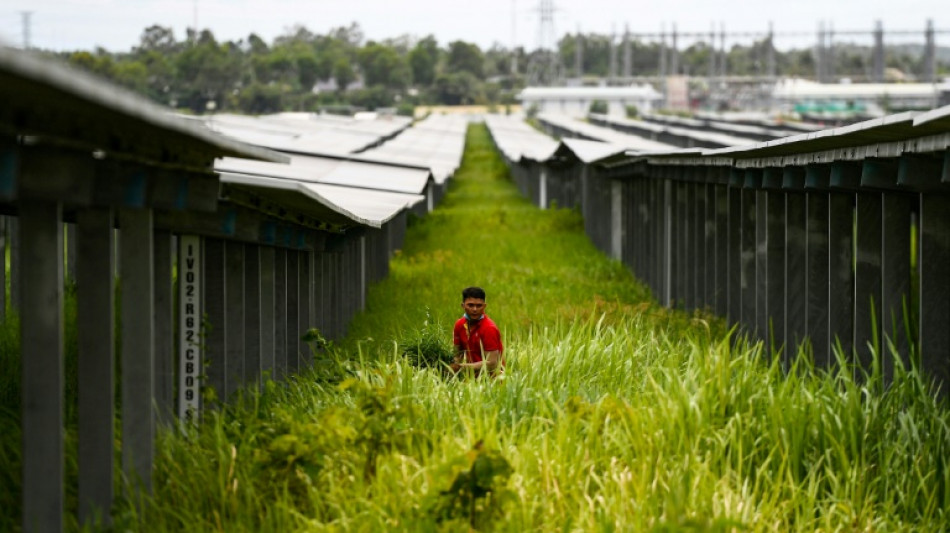

Vietnam ups wind, solar targets as energy demand soars
Vietnam has dramatically increased its wind and solar targets as it looks to up its energy production by 2030 to meet soaring demand, according to a revised version of its national power plan.
The Southeast Asian country has committed to reaching net-zero carbon emissions by 2050 and the latest edition of its Power Development Plan 8 (PDP8), as it is known, maps out how it will reach those goals.
The manufacturing powerhouse has been heavily reliant on coal to meet its rapidly expanding energy needs. But now it wants to "strongly develop renewable energy sources", according to the plan, which was published Wednesday on the government's news portal.
With targets set at 73 gigawatts (GW) for solar and 38 GW for onshore wind energy by 2030 -- and a significant increase to 296 GW and 230 GW by 2050 -- the plan looks "really ambitious", said Andri Prasetiyo, senior researcher at Senik Centre Asia.
The 2023 version of the PDP8 aimed for 12.8 GW for solar and 21 GW for wind by the end of the decade.
"I think this sends a clear message, Vietnam is positioning itself to maintain leadership in Southeast Asia's clean energy transition, (even) taking a more prominent role in the region," he told AFP.
Solar power grew rapidly in Vietnam until 2020 but its success hit a roadblock due to infrastructure limitations.
Prasetiyo said Vietnam's new targets were "increasingly feasible", although they far outstrip market projections of what the country can achieve.
- Coal, nuclear -
The latest version of the PDP8, which was approved this week, also re-emphasises the country's 2023 pledge to end the use of coal by 2050.
Coal will represent nearly 17 percent of its energy mix by the end of the decade, down from a target of 20 percent set in 2023.
Meanwhile, solar will account for 31 percent of the country's energy by 2030, while onshore wind will be 16 percent.
More than $136 billion will be needed if Vietnam is to get there, the document said.
Under the new plan, the country also aims to open its first nuclear power plant by 2035 at the latest.
It comes after Vietnam and Russia signed an agreement on nuclear energy in January, with Hanoi saying Russian nuclear giant Rosatom was "very interested" in cooperating on a project in central Ninh Thuan province.
Overall, as Vietnam targets an ambitious 10 percent economic growth rate by the end of the decade, it wants to raise its total installed capacity to a maximum of 236 GW by that date.
That's up by more than 80 GW from the figure outlined in 2023.
Hanoi is also eager to avoid a repeat of the rolling blackouts and sudden power outages in summer 2023 that led to losses among manufacturers. They also prompted massive disruption for residents, as intensely hot weather and unprecedented drought strained energy supplies in northern Vietnam.
J.al-Haddad--BT




